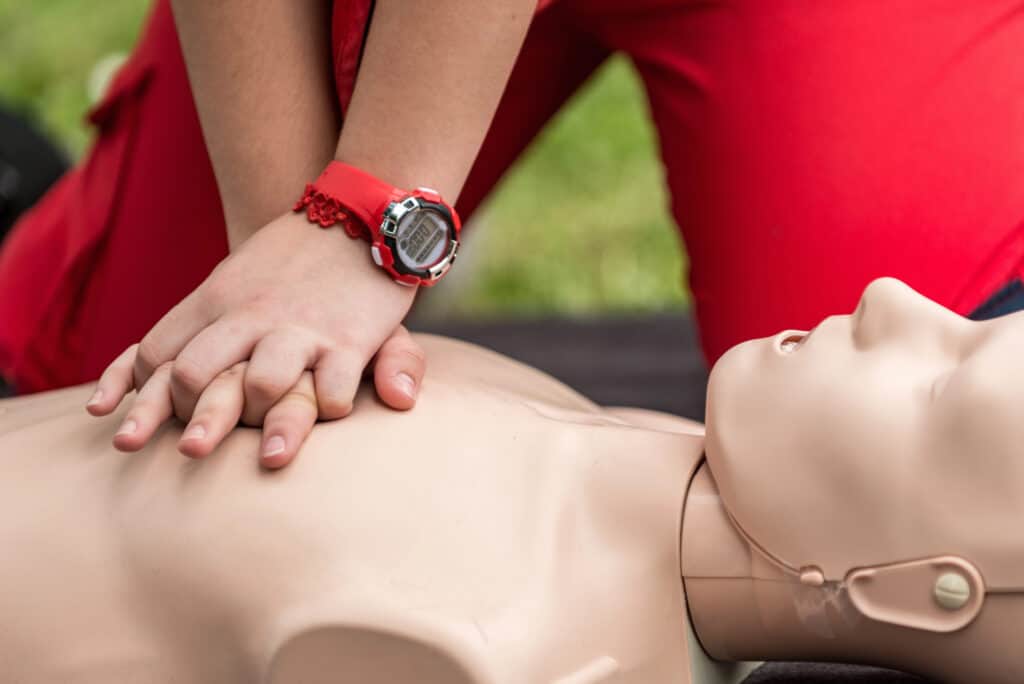First Aiders at Work: Beyond Compliance
Workplace safety is a shared responsibility, and the presence of trained first aiders plays a crucial role in safeguarding employees’ health and well-being. While meeting compliance standards is essential, the impact of having competent first aiders in the workplace goes far beyond merely fulfilling legal obligations. This article delves into why first aiders are vital, how they enhance workplace safety, and the benefits of creating a safety-first culture.
Why First Aiders Matter
Workplaces are unpredictable, and emergencies can occur without warning. A sudden cardiac arrest, a fall from a height, or even a minor injury can escalate if immediate action isn’t taken. First aiders are trained to handle such scenarios, providing life-saving interventions and preventing minor injuries from becoming major health issues.
Beyond Legal Requirements
The Health and Safety (First-Aid) Regulations 1981 require employers to provide appropriate first-aid equipment, facilities, and personnel. While compliance with these regulations is non-negotiable, focusing solely on the bare minimum can leave gaps in workplace safety. First-aiders who are well-trained and equipped can:
- Respond quickly to emergencies.
- Reduce downtime caused by injuries or illnesses.
- Boost employee confidence in their safety at work.
The Role of First Aiders in Emergency Response
In critical situations, every second counts. First aiders are often the first point of contact during workplace emergencies, offering immediate care before professional medical help arrives. Their roles include:
- Administering CPR: Cardiac arrests are among the leading causes of workplace fatalities. A trained first aider can double or triple a victim’s chances of survival through timely CPR.
- Managing Wounds: From minor cuts to severe bleeding, first aiders are equipped to control and dress wounds effectively.
- Recognizing Serious Symptoms: First aiders are trained to identify symptoms of strokes, heart attacks, and other medical emergencies, enabling prompt action.
Real-Life Impact
Imagine a manufacturing facility where an employee suddenly collapses due to a cardiac arrest. Without a trained first aider on-site, valuable minutes are wasted waiting for paramedics. However, with a skilled first aider administering CPR and using an automated external defibrillator (AED), the employee’s chances of survival are significantly improved.
Fostering a Culture of Safety
Employers who prioritize first aid training send a clear message: employee safety is a top priority. This commitment fosters a culture of care, trust, and responsibility. Employees are more likely to feel valued, secure, and motivated when they know their well-being is genuinely considered.
Benefits of a Safety-First Culture
- Improved Morale: Workers are more confident and productive in a secure environment.
- Enhanced Reputation: Companies with robust safety programs attract and retain top talent.
- Legal and Financial Safeguards: Investing in safety reduces the risk of legal claims and lowers costs associated with workplace injuries.
Overcoming Barriers to First Aid Training
Some organizations view first aid training as a cost rather than an investment. However, the benefits far outweigh the initial expenses. To overcome resistance, employers should consider:
- Highlighting Long-Term Savings: Prompt first aid reduces medical costs and compensation claims.
- Offering Incentives: Recognize and reward employees who volunteer to become first aiders.
- Making Training Accessible: Partner with certified trainers who can tailor sessions to your industry’s specific needs.
Legal Responsibilities for First Aid in the Workplace
Under UK law, employers must assess workplace risks and ensure that adequate first aid measures are in place. Factors influencing the level of provision include:
- The size of the workforce.
- Workplace hazards.
- Accessibility to emergency services.
- Past incidents and trends.
Employers should conduct regular risk assessments to determine the appropriate number of first aiders and ensure they are well-equipped and trained.
Going Beyond Compliance: Best Practices
Employers aiming to elevate their safety standards should consider the following:
- Invest in Advanced Training: Beyond basic first aid, train employees in specialized areas like pediatric care or mental health first aid.
- Provide Updated Equipment: Maintain first aid kits with supplies tailored to workplace-specific hazards.
- Conduct Regular Drills: Practice emergency scenarios to ensure readiness.
Conclusion
Having trained first aiders at work is more than just a regulatory requirement; it’s an investment in employee well-being and organizational resilience. By going beyond compliance and fostering a proactive safety culture, employers can create a workplace where employees feel secure, valued, and prepared for any eventuality.

